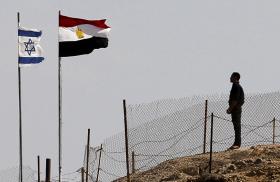

On the tenth anniversary of the U.S.-led invasion of Iraq, the New York Times convened an online panel of experts to discuss whether the war was worth the cost in light of continued violence and political problems. The following contribution was made by Michael Knights, a Boston-based Lafer fellow with The Washington Institute.
One way to define civil war is a conflict in which two sides claim to be the legitimate government: it is arguable that this did not happen in 2006 and 2007, and that it is not happening now either.
Though many factions criticize Prime Minister Nuri Kamal al-Maliki, they mostly continue to keep their representatives in the parliament and their ministers in the federal cabinet. The Kurds have legitimate doubts about Maliki's commitment to power-sharing, but they are not trying to take power from him by force. Quite the opposite: they are seeking to deter him from using military force against their semi-autonomous regional government.
The Sunni Arabs are protesting for fairer treatment, not seeking to actively erase the stubborn reality of Shia-led government. Their chances of launching an Arab Spring-style uprising are minimal because they are a sectarian minority, not the majority group in the country.
And the Shia factions -- for all their complaints about the prime minister -- tend to side with Maliki when the chips are down. In the just-passed 2013 budget, almost all the Shia blocs banded together to pass a strongly anti-Kurdish budget. Instead of watching for civil war, it is more useful to think of Iraq as a place where various groups are looking for a much better deal from the central government -- more autonomy in the Kurdish case, equal treatment for the Sunnis.
But to the heart of the matter: Is Iraq getting more or less violent? Does it feel like a civil war to Iraqis? By the start of 2011 we saw incident figures as low as 200 reported incidents of violence per month in Iraq; since the beginning of 2013, there have been 800 reported major incidents per month. This is a quadrupling of violence in two years, and reported violence is only a fraction of actual violence. Indeed the most significant kind of violence is routinely not counted: non-lethal intimidation by kidnapping, murder, abduction and torture. This kind of attack, often targeted on local community leaders, has a tremendous ripple effect, continuing the sectarian or ethnic cleansing of areas, or reducing the willingness of locals to inform against militants. It is invisible and corrosive -- what I have called low-visibility, high-impact violence.
A major blow-out is coming in the second half of 2013, when Sunni jubilation at the collapse of Assad regime in Syria may collide head-on with Maliki government paranoia about being the next domino to fall. Syria is a good place to conclude because it forces us to ask: If we had not invaded 10 years ago, might we simply be considering that option now, watching Saddam or one of his sons crush rebelling Iraqi cities in the aftermath of an Arab Spring?
That would be a civil war.
New York Times



